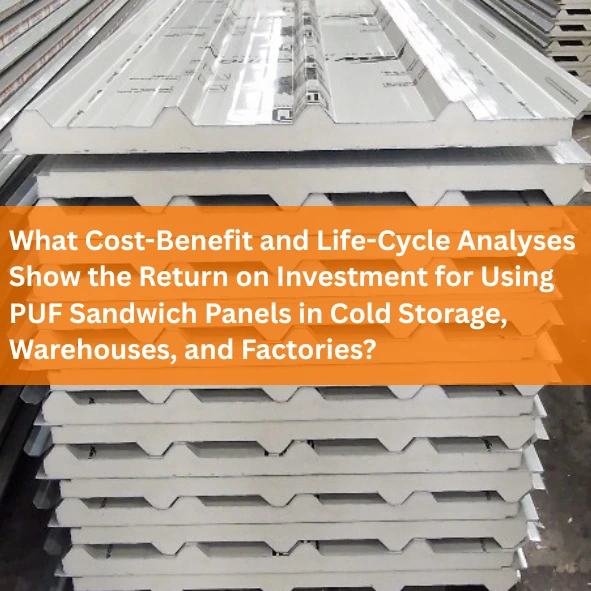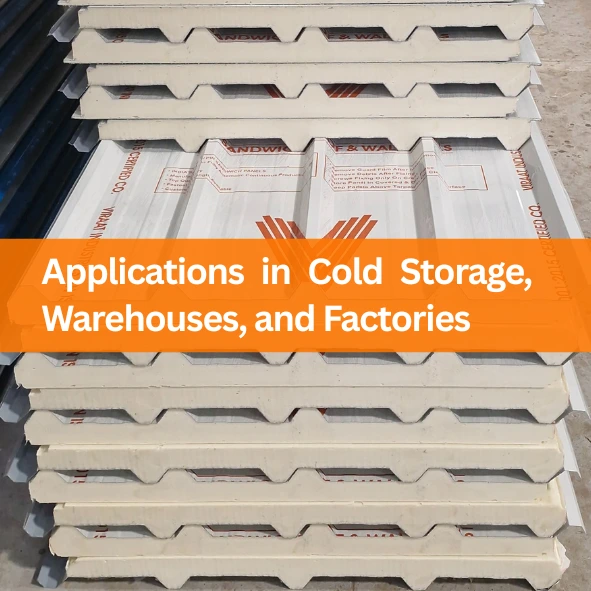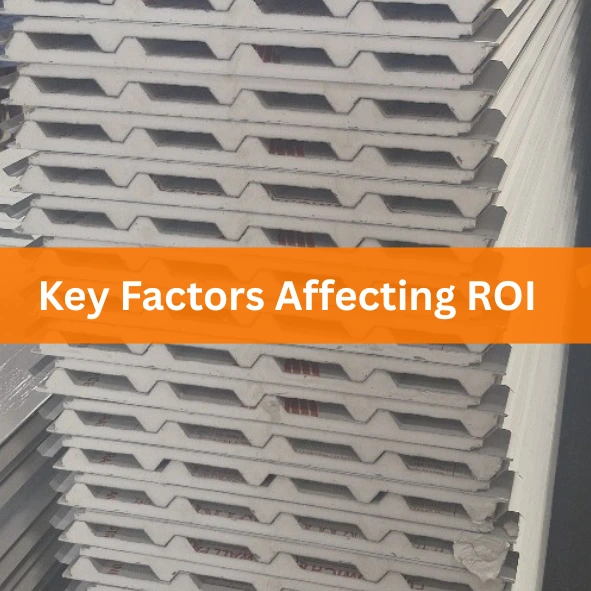
In modern industrial and commercial construction, PUF sandwich panels have emerged as a preferred solution for cold storage, warehouses, and factory buildings. Their popularity is not merely due to quick installation and aesthetic appeal but largely because of the cost-benefit and life-cycle advantages they offer. Understanding the return on investment (ROI) of these panels requires a closer look at their long-term performance, energy efficiency, and maintenance costs.
Cost-Benefit Analysis of PUF Sandwich Panels
The initial cost of PUF sandwich panels may be slightly higher than conventional building materials like brick, concrete, or metal sheets. However, when considering the overall expenses, these panels often provide significant savings. Here’s why:
Reduced Energy Consumption: PUF panels have excellent thermal insulation properties, which drastically reduce heating and cooling costs. For cold storage facilities, this means maintaining required temperatures consumes less energy.
Low Maintenance Costs: Unlike traditional materials that may require frequent repairs due to corrosion, moisture, or pest infestation, PUF panels are durable and require minimal upkeep.
Faster Installation: The modular design of sandwich panels enables quick assembly, reducing labor costs and downtime for businesses.
Life-Cycle Analysis and Long-Term Savings
A life-cycle analysis (LCA) evaluates the total environmental and economic impact of a product over its lifespan, including production, installation, operation, and disposal. For PUF sandwich panels:
Durability: With proper maintenance, PUF panels can last 20-30 years without significant performance degradation.
Energy Efficiency Over Time: The insulation efficiency ensures sustained energy savings year after year. Businesses often recover initial investments within 3-5 years through reduced utility bills.
Recyclability: Some PUF panels are recyclable, contributing to sustainable building practices and potentially lowering waste disposal costs.
Applications in Cold Storage, Warehouses, and Factories

The ROI of PUF sandwich panels varies based on the type of facility:
Cold Storage Units: Maintaining sub-zero temperatures is energy-intensive. PUF panels’ low thermal conductivity ensures minimal heat transfer, directly translating into energy savings and improved ROI.
Warehouses: Even in non-temperature-controlled warehouses, PUF panels offer insulation against external heat and moisture, protecting stored goods and reducing HVAC loads.
Factories: Industrial facilities often require controlled environments for sensitive machinery or products. PUF panels help maintain consistent internal conditions while lowering operational costs.
Key Factors Affecting ROI

Several variables influence the ROI of PUF sandwich panels:
Panel Thickness: Thicker panels provide better insulation but may increase initial costs. Selecting the optimal thickness is crucial.
Quality of Installation: Proper sealing and installation ensure maximum thermal performance and structural integrity.
Local Climate: Regions with extreme temperatures benefit more from the insulation properties, enhancing energy savings.
Electricity Costs: Higher local energy rates amplify the cost-saving potential of PUF panels.
Conclusion
A cost-benefit and life-cycle analysis clearly demonstrates that investing in PUF sandwich panels is financially prudent for cold storage, warehouses, and factories. Although the upfront cost may be higher, long-term savings from energy efficiency, durability, low maintenance, and sustainability make PUF panels an ideal choice for businesses aiming for high ROI.
By strategically selecting panel thickness, ensuring proper installation, and considering local climatic conditions, companies can maximize their returns while also contributing to environmentally responsible construction practices.
Frequently Asked Questions
PUF (polyurethane foam) sandwich panels are composite panels made of an insulating foam core (polyurethane) sandwiched between metal skins. They are used because they deliver excellent thermal insulation, structural strength, faster installation, and lower maintenance compared to conventional materials.
Because of their superior insulation, PUF panels reduce heat transfer, thereby lowering heating/cooling loads. In cold storage, especially in subzero environments, these savings become more pronounced. Over time, these energy savings help recover the investment.
(Exact savings depend on climate, usage, electricity cost, panel thickness, and sealing quality.)
With good maintenance, PUF panels can last 20–30 years (or perhaps even more) without significant deterioration in performance.
Key variables include:
Panel thickness (thicker panels improve insulation but cost more)
Installation quality (proper sealing, joints, and workmanship)
Local climate and temperature extremes
Electricity/energy costs in that location



